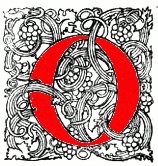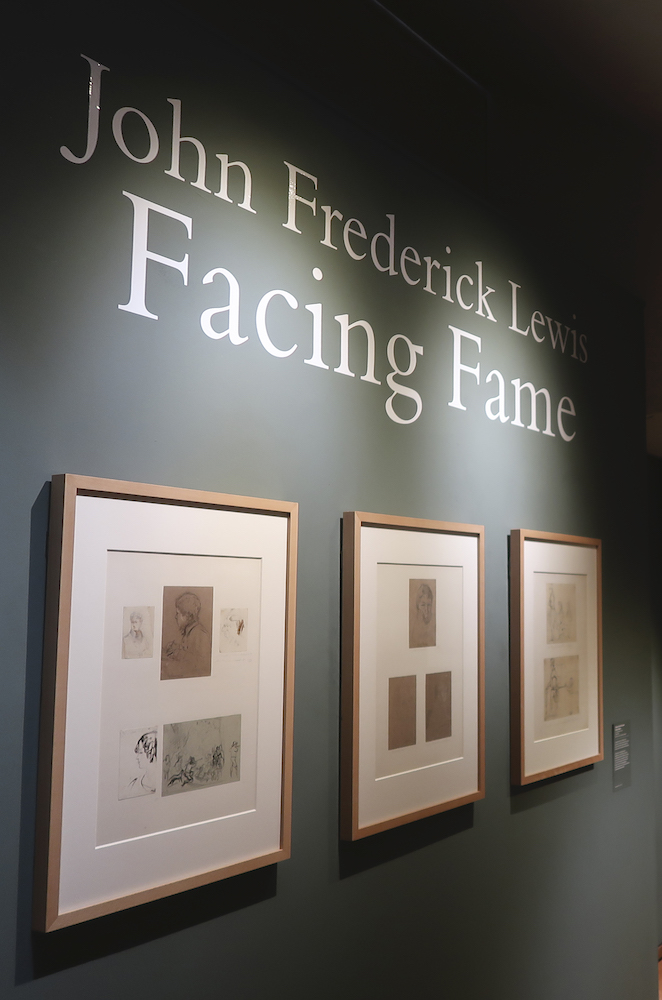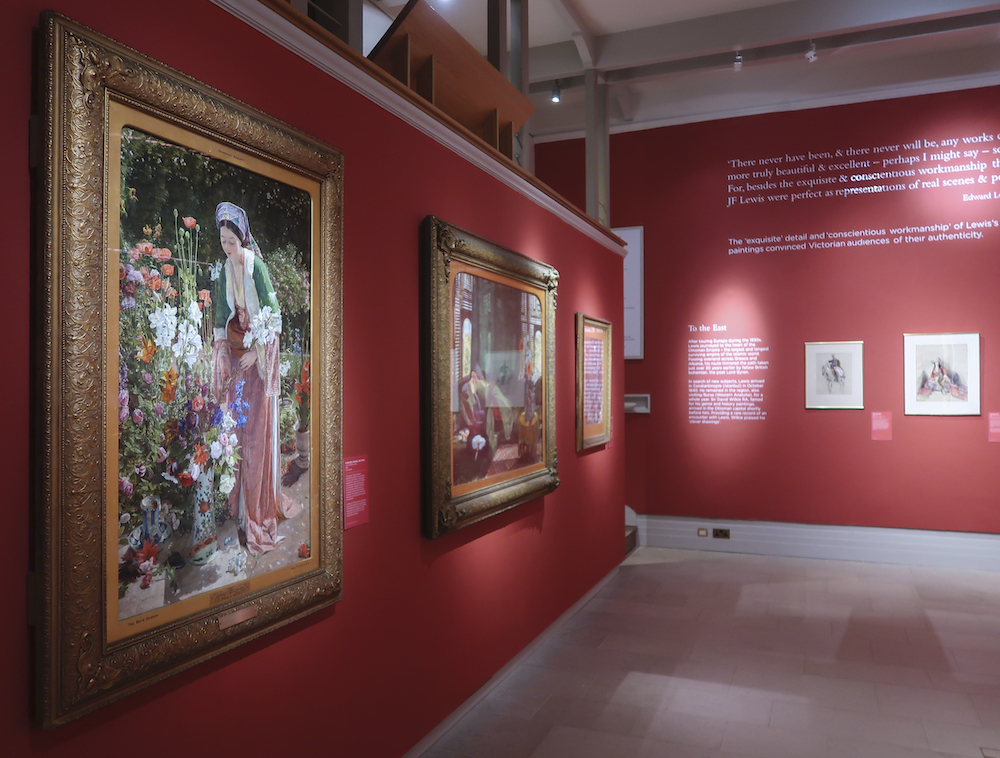Many thanks to Sophie Brown at the gallery for her warm welcome, and also to Abbie Latham, for forwarding Sophie's installation shots, with the relevant information. The images of individual works come from the exhibition press release. Click on all the images to enlarge them, and sometimes for more information about them.

nce again, the Watts Gallery has chosen an ideal subject for one of its temporary exhibitions. John Frederick Lewis's work was much admired in Victorian times, but since then has generally been seen as part of the larger movement of British Orientalism. Paintings of his, however fine, that fall outside the scope of that movement, have been neglected. Even paintings that lie within it have had to share the stage with the work of others, such as William Holman Hunt and Edward Lear, who have captured the public imagination in other ways as well. The nicely varied display space to the side of the gallery's large main hall puts Lewis back in the spotlight, following the stages of his artistic career and providing a perfect all-round introduction to his oeuvre. It also raises some fascinating questions about him, and about Victorian "artist-travellers" in general.


Right: John Frederick Lewis, Sheets from the Lewis Family Album, c.1814-1820s, pencil, pen, ink, chalk on paper, Royal Academy of Arts, London. Left: The works seen here are In the Bey’s Garden, Asia Minor (shown and discussed below), and The Siesta, 1876, oil on canvas, from the Tate.
Lewis's father was an engraver, one of his uncles a book-binder, and another (George Robert Lewis, 1782-1871) a painter of repute. His was a precocious talent, nurtured from the start. Our first glimpse of him here is in the leaves of the family album, samples of which are shown on the left above. It is a small self-portrait sketched in youth: head resting on hand, he contemplates life rather quizzically. This sets the scene for his future output, for paintings of Pre-Raphaelite intensity that capture and reflect every detail, every glancing shaft of light (as in the later painting on the left below), even the very atmosphere itself — and take us into a whole other world. Yet it is a world to which, paradoxically, neither we nor the artist can really belong.

John Frederick Lewis, The Pipe Bearer, 1854. Oil on panel. Trustees of the Cecil Higgins Art Gallery (The Higgins Bedford).
The artist is next shown stepping onto the artistic stage himself. Simon Jacques Rochard (1788-1872), best known as a miniaturist, produced a small but telling portrait of him in about 1826, at the age of twenty-two. This, of course, was long before Lewis donned oriental costume in the Middle East, but he looks so much the young English dandy here that, in retrospect, it seems to be the first of his several personae. He was right to present himself so confidently, though. He was already making his name as a painter of animals and sporting scenes, and had some very useful contacts. Permitted to work in Windsor Great Park, he painted Foresters stalking Deer there (1826); further afield, in Scotland, he captured a wonderfully informal scene of his friend Edwin Landseer, fishing with a keeper (1830). He also focused on a Highland Interior (1830-32). Quaint interiors, with or without the human presence (but always speaking of it) often feature in his work: Interior of a Studio, c. 1830, is shown in this part of the exhibition too. Interestingly, even in these early days, this interior includes some Japanese ceramics. Lewis, it seems, could have made a comfortable living at home as a trendy genre painter.
But Scotland was not far enough. Lewis next ventured further afield, first to Europe, and then to the Orient. Europe was a common enough destination, but Spain was something of an exception, and his work from there earned him the nickname "Spanish Lewis." This could perhaps have been more fully illustrated here: none of the gallery's press images comes from this period, suggesting that it was not expected to be the main attraction of the exhibition. The focus then shifts to the Middle East. Hunt and Lear were, of course, only two of a number of "Artist-Travellers" who chose that destination. But none went to the extent of spending ten years in Cairo, as Lewis did. Perhaps it was inevitable that, in the gallery as in his life, "Spanish Lewis" should soon give way to Lewis the Orientalist. His next reincarnation may still come as a surprise: here he is in full native dress as a carpet-seller, in a colourful Cairo bazaar:


Left: Lewis's The Bezestein Bazaar of El Khan Khalil, Cairo, 1872. Watercolour and bodycolour on paper. Trustees of the Cecil Higgins Art Gallery (The Higgins Bedford). Right: John Watkins's John Frederick Lewis, 1864. Carte de Visite. Rob Dickins Collection, Watts Gallery Trust.
Not for nothing has the gallery selected this painting for the front of its current information leaflet. Did Lewis simply "go native"? The Victorians loved dressing up, and this was one of several possibilities for foreigners in new lands. At the other extreme, they would cling hard to their cultural identity, and even try to foist it on those around them, behaviour for which the British in India were especially notorious. Does it follow that adopting local dress and customs was not just fun, but a gesture of solidarity with those around them? And would it have been perceived as such by the local people, or as an encroachment? In this curious self-portrait, Lewis confronts the viewer challengingly. Seen as a carpet-seller, he is a substantial figure who will surely drive a hard bargain, and is as worthy of respect as any bargain-hunting tourist. Seen as the artist-in-costume, however, he sits alone with his dog snoozing beside him [close-up], excluded from the casual camaraderie of those at the table to the right. Despite all the first-hand experience that his paintings represent, and his continuing fascination with minute detail (such as that scrupulously depicted turban, or the bright, pointed, flexed slippers), there is often something ambiguous about Lewis's Oriental paintings, and they have given rise to much debate.


Left: John Frederick Lewis, In the Bey’s Garden, 1865. Oil on canvas. Harris Museum, Art Gallery & Library, Preston. Right: Detail of the blue flowers.
On his eventual return, Lewis settled in Surrey – another reason why this exhibition at Compton is so welcome here. Walton-on-Thames, where he spent the last years of his life, is only about half-an-hour away by road. Walton is in the north of the county, close to the Greater London border. Its railway station opened in 1848, and, at little more then fifteen miles from town, it was a handy commute even then. But there were fewer distractions. It was here that Lewis worked up a decade's worth of sketches into pictures of harems and exotic courtyards and gardens. His wife Marian modelled for the gracious oriental beauty of In the Bey's Garden (1865), where, as in Lilium Auratum, white lilies, red poppies and pink roses grow in glorious profusion. Here there are a few deep blue flowers as well, possibly delphiniums, associated with openness and good cheer. It is an outsider's view, brilliant and very appealing, but infused with an element of make-believe. It is well worth going to see these paintings, just to get a sense of the issues here.
Not to be missed either is a small display case tucked away in a corner, with a few ephemera. It includes, for example, the letter from Lear to Marian, praising the paintings, that is quoted on one of the walls: "There never have been, and there never will be, any works depicting Oriental life — more truly beautiful & excellent." Lear was generous with his praise, and he of all people was qualified to judge. Apart from the carte de visite shown above, there is one last likeness of Lewis nearby, described by the gallery as having been "recently discovered." A pen-and-ink study of about 1865-68 by the portrait-painter Sir Francis Grant (1803-1878), it shows a rather distinguished elderly man with his specs half-way down his nose. Lewis, quietly settled in this leafy suburbia, imbuing his memories of an exotic past with a degree of very personal artistic license, looks comfortable with himself at last. Take time to study this representative gathering of his works — it is such a rare opportunity to see them together!
Last modified 19 August 2019